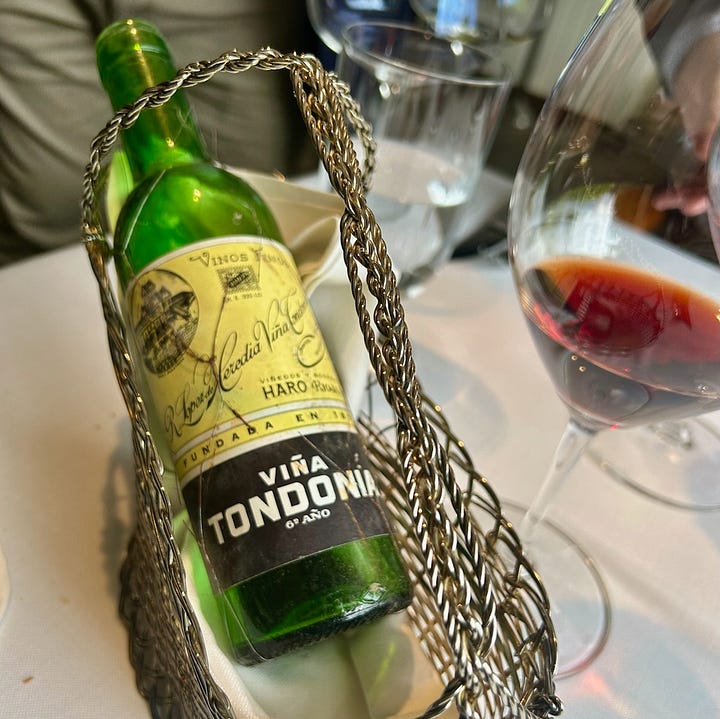
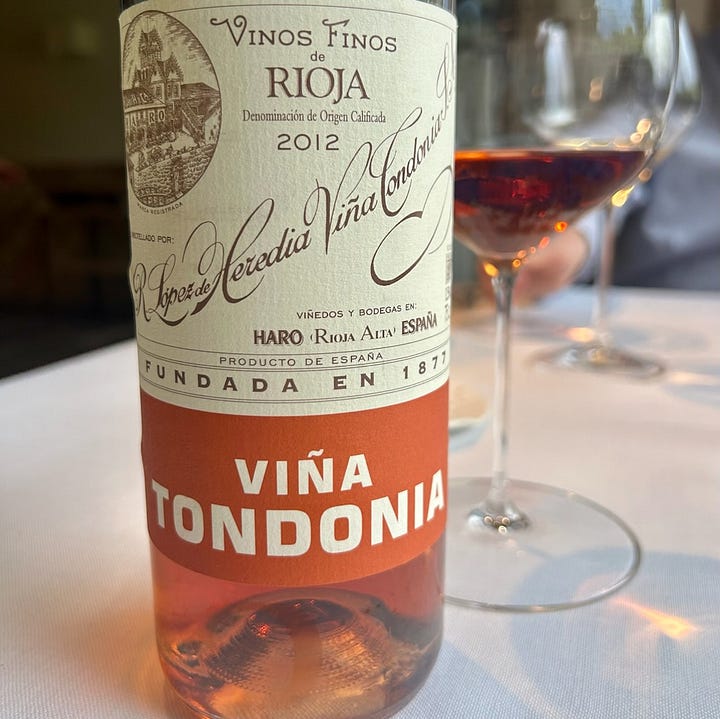
A few weeks ago, I had an amazing chance to taste two hard-to-find Rioja wines from López de Heredia: Viña Tondonia from the legendary 1970 vintage, as well as the 2012 Viña Tondonia rosé. This was at a magical restaurant called Venta Moncalvillo, which I’ll be talking more soon, when I update my travel guide to Rioja.
Last year, I was lucky enough to visit López de Heredia, the legendary estate, and met with Maria José López de Heredia, the managing director from the fourth generation of the world-renowned winemaking family. I was a little late. As we shook hands and I apologized, Maria José told me not to worry. “I’ve never been fast in my life,” she said.
López de Heredia is famous for very aged wines—the most recent vintage releases are 2016 for the whites and youngest red, and 2012 for the reserve reds. The white wines age four to six years in the barrel, while the reds age three to six years.
“In our family, we are taught to be patient. It’s in the genes of López de Heredia,” said Maria José. (To avoid confusion with the winery’s name, I’m identifying her by her first name.)
I told Maria José about how my relationship with her wines—which I’d always loved—changed dramatically during a mid-pandemic visit to Rioja, when I tested positive for Covid. This was July 2021, the summer of the delta variant, just after the first rounds of the vaccine, and mere weeks after Americans were permitted to travel to Europe again. At that time, testing positive meant I could not return home to the U.S. until I tested negative, which everyone then believed could be 10 to 14 days.
With nowhere else to go, I rented an apartment in the town of Haro, in the heart of Rioja, and spent that uncertain time alone and isolated. I mostly felt fine, though I did lose my sense of taste and smell for one day, which caused a 24-hour panic attack as I considered life as a wine writer who cannot smell or taste.
To fight cabin fever, I’d drive to the outskirts of town. Alone, under the midday sun, I hiked along a meandering section of the Ebro River called the Ruta Hondón. My destination was an ancient necropolis, believed to be the remains of a Celtic temple. The Celts made wine here long before the Romans arrived. Before them, the Phoenicians arrived around 1200 B.C. and planted their vines. But civilization here is older. Huge stone dolmens built 3,000 to 6,000 years ago dot the landscape on the Basque side of the Ebro, as well as the remains of a neolithic village.
With the Cantabrian Mountains looming in the distance, I trekked alone past a 13th-century bridge, through miles of old vineyards, some of which were clearly marked as Viña Tondonia, López de Heredia’s legendary vineyard. Once I’d made it to the ancient hilltop Celtic temple, I’d sit there for a long time, overlooking the vast spread of vineyards. Archaeologists believe the human-made indentations in the rock were sacrificial pools. It all felt deeply spiritual.
At night back in Haro, all I could do was sit alone on my balcony, sipping the wines I’d acquired during pre-isolation visits to new-wave Rioja wineries. But I’d also made one quick, triple-masked trip to the store, and was able to grab López de Heredia’s white Viña Gravonia. I promised myself when this was all over, I was going to make a proper visit to the winery.
On day eight, I finally tested negative. Free of the virus, my first stop was the López de Heredia winery. At that moment, they sadly did not accept visitors. (They still don’t, aside from professional visits.) But the ornate tasting kiosk was open, and I bought a bottle of 2008 Viña Tondonia Reserva—then the current release, a wine that is aged an astonishing six years in American oak barrels.
It was a big wine for a summer morning in Spain, but I drank it along with a plate of jamón and olives, and sat in the sunshine enjoying my freedom from the virus. Drinking that wine, with its cool, savory, earthy notes—forest, tobacco, dark fruit—it felt like I was connecting to something ancient, profound, and ongoing.
After I told Maria José the story of my pandemic connection with her wines, she smiled and said, “I feel like we didn’t learn anything from Covid. People all went back to living such fast lives. They’re even more impatient.” It’s quite an on-brand statement, and, as I would come to realize, Maria José López de Heredia is rarely off-brand.
We toured the family’s 147-year-old complex in Barrio de la Estación, so named for the railroad station that was built in the late 19th century to connect Rioja with Bordeaux negociants. In the 1880s, French vineyards were devastated by phylloxera, and winemakers looked south. “Rioja was born because of phylloxera,” Maria José said. “The wineries in Rioja were shipping bulk wine to Bordeaux during the crisis.” The classic producers neighboring López de Heredia in Barrio de la Estación—Muga, Gómez Cruzado, La Rioja Alta, CVNE—all date back to that booming era when Rioja rose to prominence as a region.
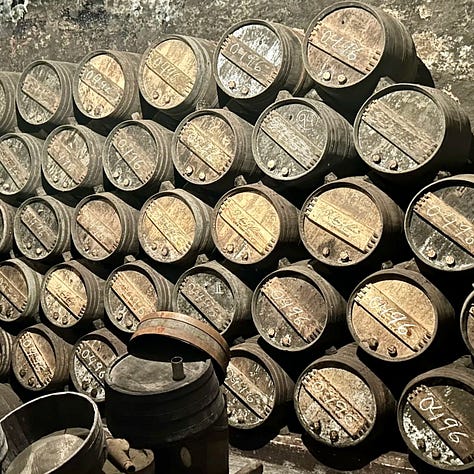
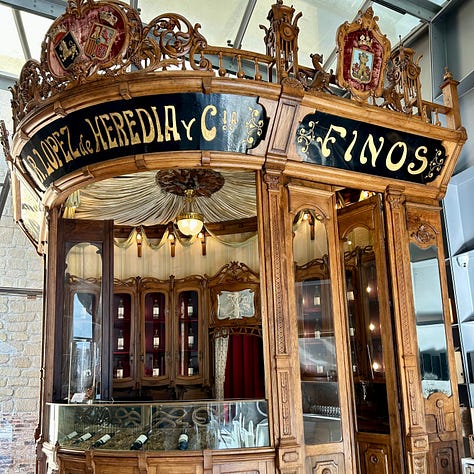
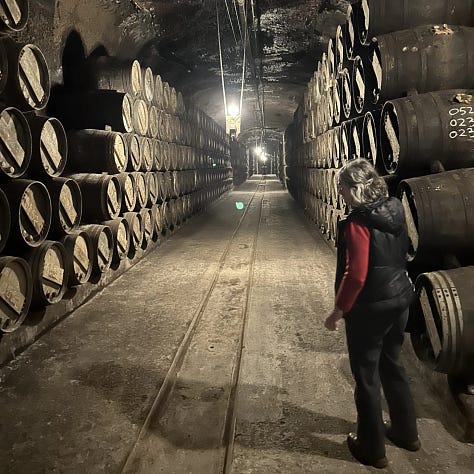
The family patriarch, Don Rafael López de Heredia y Landeta (Maria José’s great-grandfather) was born in Chile to Basque immigrant parents, who sent him back to school in Spain as a 14-year-old in 1870. Two years later, he dropped out of school to enlist in the Third Carlist War, eventually being held prisoner in Bordeaux. He wrote to his mother back in Chile, asking for money to release him. She said no. Which turned out to be fortuitous. While in France, Rafael learned the wine business from a French negociant, and came to Rioja during phylloxera to build the winery in 1877.
Maria José drove us out to the 100-hectare Viña Tondonia vineyard, first planted in 1913. Tondonia was the name of an ancient village, and over time the local name changed to Hondón, the name of the trail where I’d taken my spiritual pandemic hikes. “People say this was a Celtic sanctuary, but it has not yet been proven,” she said.
Many Americans tend to think of Rioja as being made solely from the Tempranillo grape, but historically that’s not accurate. The grapes planted in the Tondonia vineyard, and López de Heredia’s blends, attest to this. “In the early days of Rioja, in the 19th century, the Tempranillo struggled to reach a high-enough alcohol content. That’s why Rioja was always a blend of Tempranillo, Garnacha, Graciano, and others,” she told me. “We always needed the other grapes.”
While the family’s old vineyards (Tondonia, as well as Cubillo, Bosconia, and Zaconia) provide extraordinary raw material, it’s really in the cellar where López de Heredia’s uniqueness comes into focus. Maria José led me through a cobwebbed labyrinth that houses more than 13,000 barrels, and walls lined with bottles. At any given moment, they are storing at least 18 vintages in the winery.
In a way, it’s surprising how revered these wines are among younger generations of wine professionals and enthusiasts. They fly in the face of today’s popular styles. These are certainly not glou-glou or chillable reds. López de Heredia still proudly embraces oak—and that oak is mostly American, not French. (“We buy the trees in the Appalachian Mountains,” Maria José said.) And López de Heredia is not a small, artisanal project either. They produce 350,000 bottles per year.
“People talk about market forces. But no, the market never forces us,” said Maria José. “All I want to do is the recipe of my great-grandfather and my grandfather. Maybe that’s boring. But for us, that’s important.”
López de Heredia even has its own on-site cooperage, which makes and maintains all its barrels. “We want zero tannins from the oak,” Maria José said. “We don’t look for the flavor of the oak. Never the vanilla. That’s a sin for us. Of course we want the complexity, the secondary nuances that the barrel gives us. But we’re never looking for the licorice flavor in the Tempranillo, or the candy chewing gum flavor of the Grenache.”
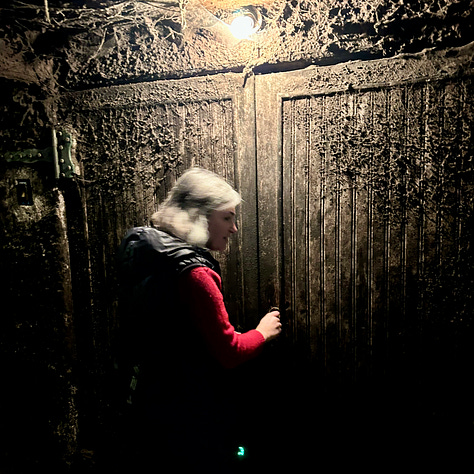
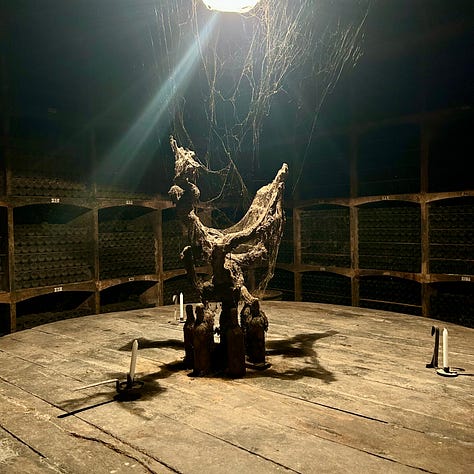
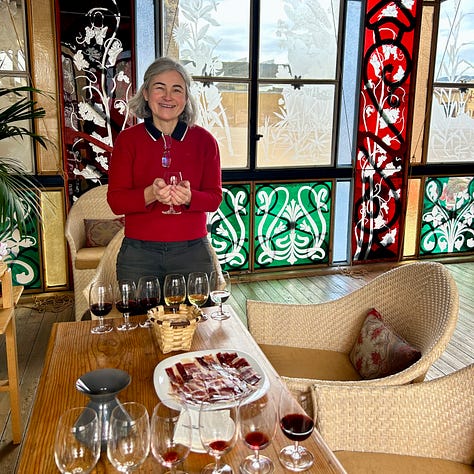
She added: “Rioja for a long time had been blamed for too much oak. And it’s true. But that was never our style.”
To achieve their style, López de Heredia works with very old barrels. Many of the red wine barrels are 170 years old, and the 6,000-liter barrels for the white wines are 135 years. Over the years of barrel aging, wine is moved regularly. “New wine in new barrels, old wine in old barrels. Just like in the Old Testament,” she jokes.
We moved from the cellar to a gorgeous tasting room lined with early 20th century colored glass. As Maria José poured me their recent releases, she told me something surprising that runs counter to the modern wine trade: “For me, the vintages are unimportant. In the cellar, we fight against the character of the year. When we taste the wines, we don’t distinguish the vintages. We don’t want the vintage to overshadow our brand style,” Maria José said. This is not to say that vintages aren’t well noted by López de Heredia. (2021, for instance, she called “perfect—we will never forget it.”) It’s more about caretaking a legacy taste profile that many generations of avid fans have come to expect.
“We find that during times of crisis, our wines do very well,” she said. “During times of crisis, people go back to the brands they know.”
That certainly had been the case for me during my own small pandemic crisis, patiently waiting in Haro.
This piece originally appeared in The New Wine Review (now owned by Unicorn Auctions).
Tasting López de Heredia
Bottle recommendations and tasting notes are available to paid subscribers only. Upgrade today!


